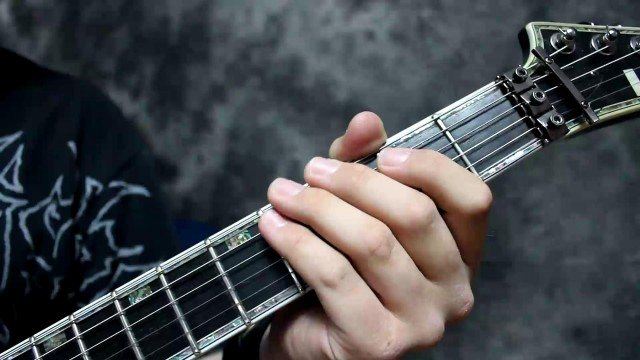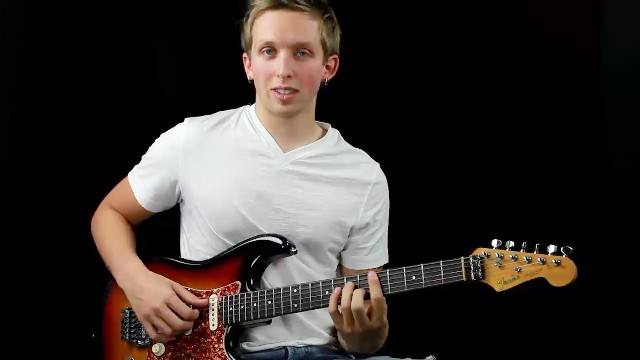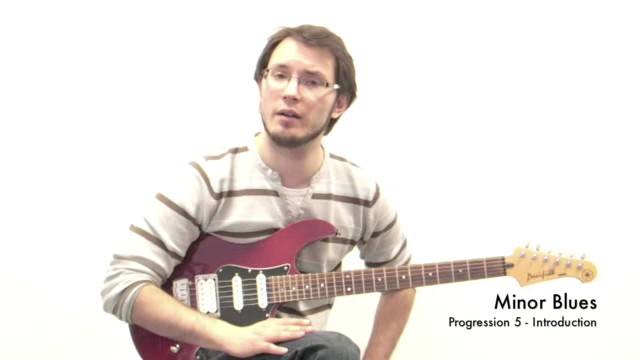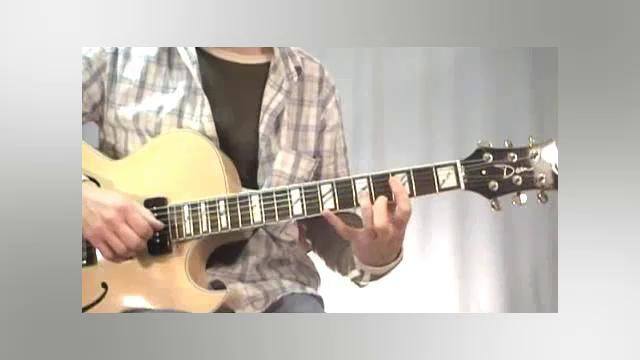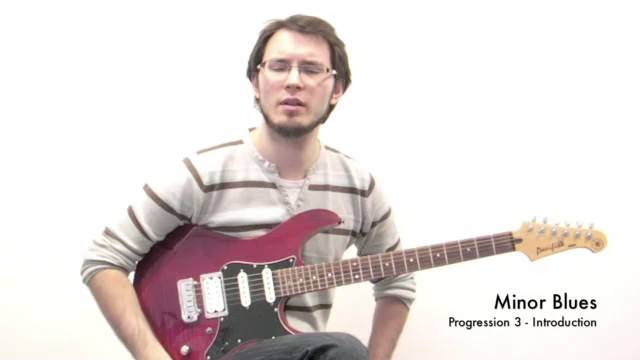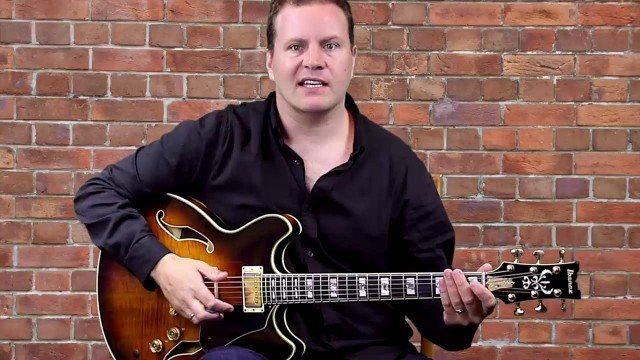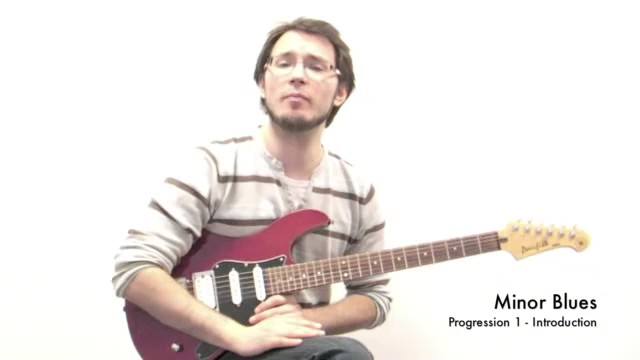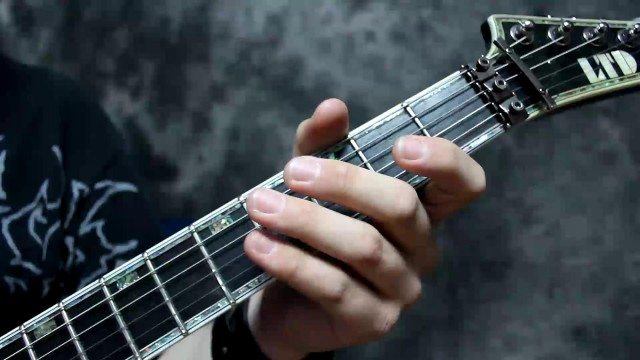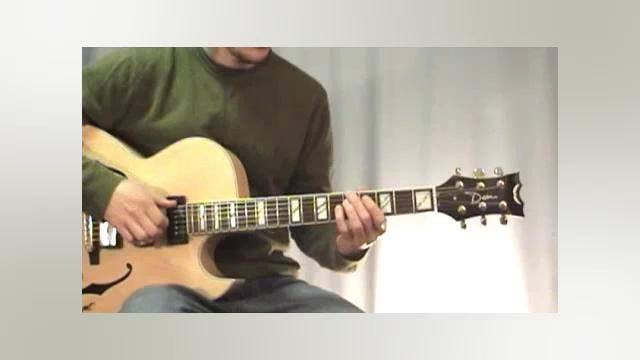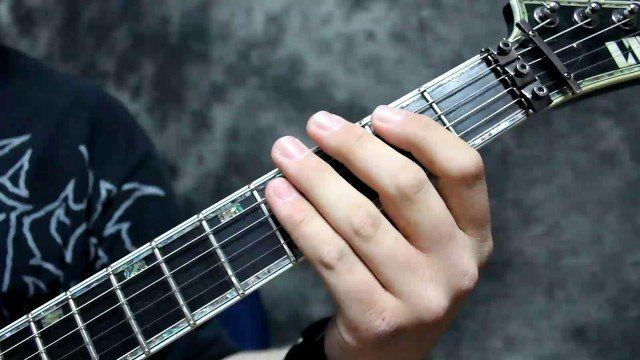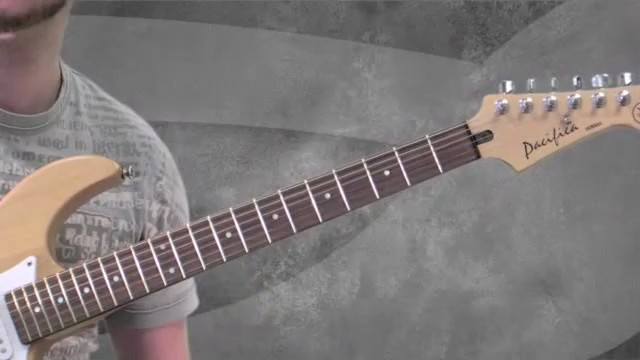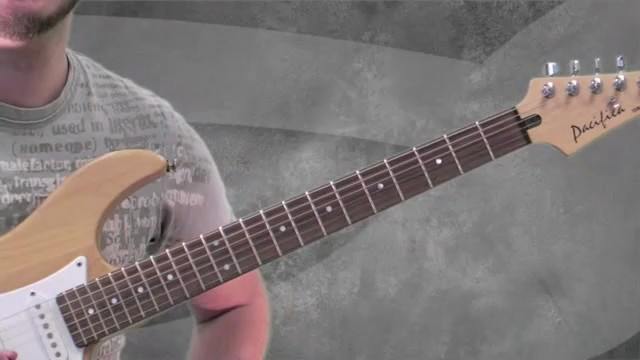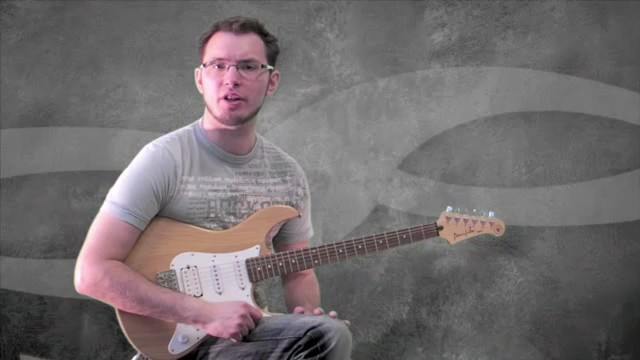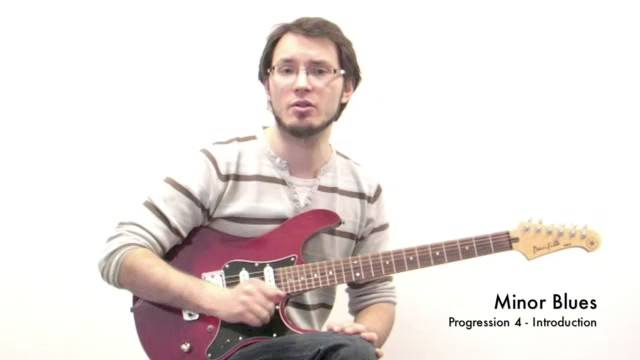Before breaking down this track I want to point out our 3rd Inversion.
As we discussed earlier, the 3rd inversion is a voicing that begins with the 7th degree of the chord as the Root note(bass note) and as it happens, this track begins with said voicing.
On the video you will see me playing a simple accompaniment to a blues in Bb, 4 chorus in length. Thats 12 bars a chorus. Below each chorus has been notated and separated into 12 bar groups for ease of discussion.
Chorus 1
Bars 1 to 4- I have used a 3 note voicing of the 3rd inversion. If you played a Bb7 in a barre form you will see where these notes fit into the chord.
Bars 5 to 6- This is a 3 note voicing of Gm7b5. You should remember from last lesson that we discussed how the 3rd degree of a Dominant 7 chord can be played as the root of a m7b5 chord.
Bars 7 to 8- repeat of 1 to 4.
Bars 9 and 10- Both chords are played in Root position with a melodic voice leading. F7 starts with the 9th on top, leading up to the 10th(or 3rd an octave up) and down to the 7th. Eb7 begins leading with the 3rd on top, moving down to the 9th and down to the 7th.
We finish with a Bb7 in root position.
Chorus 2
Here the accompaniment starts from a semi tone below sliding into a Bb9 Voicing. A common device in blues and jazz accompaniment.
Bar 4 includes the use of our 2nd inversion as a smooth transition into the Eb7 in Root position.
Bar 5 and 6 make use of some single note's with a chromatic ascent into the Bb7. Which is voiced with only the 7th and 3rd.
Bar 9 makes use of a 3 note voicing of F7 in 3rd inversion. Bar 10 I am going to call a 2nd inversion since it has the third in the bass. It begins with the G note(3rd) in the bass and in the lead voice which slides up one semi tone to Ab(the 11th of Eb7). This voicing could be considered Eb11. Once again we end with Bb7 in Root position. Some passing voicing's which I wont get into during this lesson, and ending on the last up beat with a Bb9.
Chorus 3
Bar 2 you will see a Bb13 with the leading note bouncing up and down from the 13th to the 5th.
Bar 4 begins with Dm7b5 as a substitution for Bb7 with a melodic descent to the D then a fragmented 2nd inversion and then Eb7 in its 3rd inversion coming in on the up beat before bar 5. (Playing a chord slightly ahead of the beat can often add a strong swinging feel to the music, this is a commonly used device)
Bar 6 includes a fragment of the Eb13 voicing also leading into Bb13 ahead of the beat.
Bar 8 leads into an F7 1st inversion ahead of the beat.
Bar 9- Eb13 ahead of the beat.
Bar 10- Bb13 ahead of the beat.
Finally, the last chorus is a repetition of the first.
This concludes our tutorial on Chord inversions. I hope you had fun with this and learn't a thing or two. This is not the end of our discussion though, there is much more that can be said about the various ways to manipulate chords and in future I will be covering many other approaches.
If you have any questions about the lessons please contact me in the forums.






